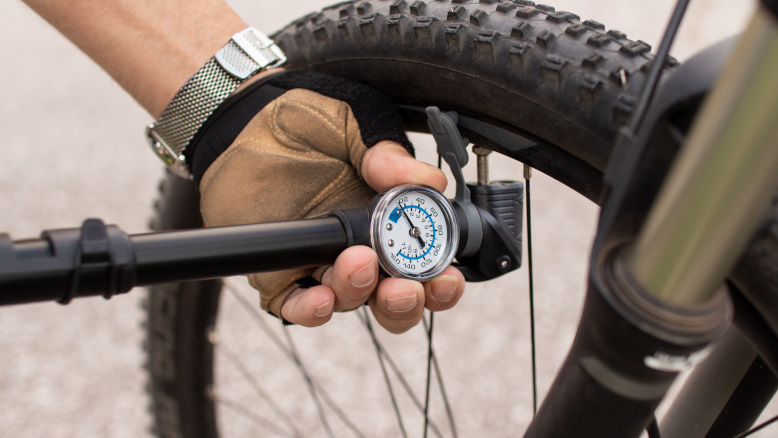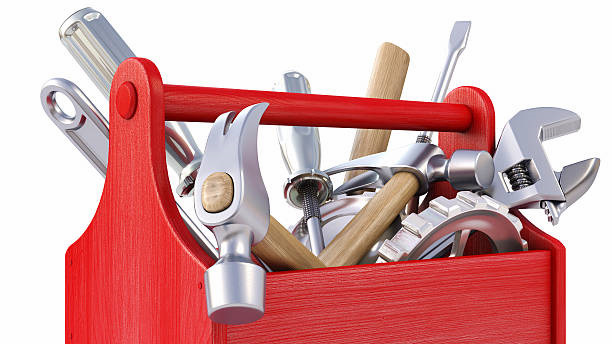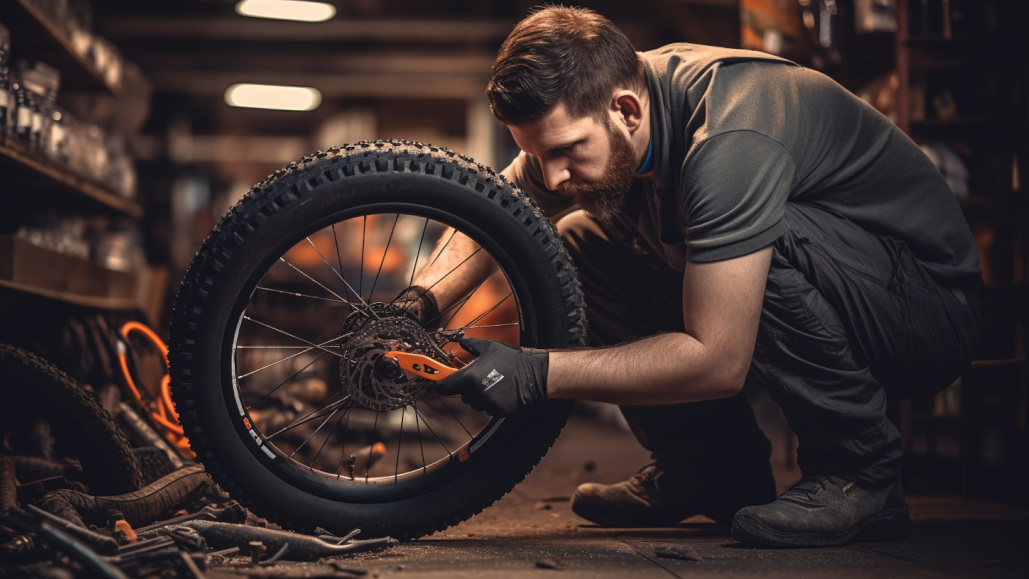Ebike Flat Tire Repair Guide & Quick Tips
As an e-bike owner, you know the joy and freedom that comes with cruising around on your electric-powered bicycle. But what happens when you encounter a flat tire? Don’t worry, we’ve got you covered with this comprehensive ebike flat tire repair guide. In this article, we’ll walk you through the steps to fix a flat tire on your e-bike, providing you with quick tips and expert advice to get you back on the road in no time.
Whether you ride your e-bike for leisure, commuting, or fitness, dealing with a flat tire is an inevitable part of owning a bicycle. Being prepared and knowing how to fix a flat tire yourself can save you time, money, and the hassle of waiting for assistance. Let’s dive into the basics and explore the essential tools and techniques you need to become a confident ebike flat tire repair expert.
Key Takeaways:
- Fixing a flat tire on your e-bike is an essential skill that all e-bike owners should have.
- Knowing how to properly maintain your ebike tires and prevent flats can save you time and money in the long run.
- Having the right tools and materials for flat tire repair is crucial.
- Understanding the step-by-step process of fixing a flat e-bike tire will give you the confidence to handle any situation.
- Special considerations may be necessary when dealing with unique ebike tire features like tubeless tires or fat tires.
Understanding the Basics of Ebike Tires
When it comes to ebike tires, it’s important to have a good understanding of their characteristics and maintenance requirements. This section will delve into the different types of ebike tires, their vulnerabilities, and the key differences between regular bike tires and ebike tires.
Types of Ebike Tires and Their Vulnerabilities
Ebike tires come in various types, each designed to suit different riding conditions and terrains. It’s essential to choose the right type of tire for your specific needs. Here are some common types of ebike tires:
- City/Trekking Tires: These tires are ideal for urban or smooth terrain riding. They usually have a slick or semi-slick tread pattern that provides low rolling resistance and high efficiency. However, their vulnerability lies in their limited grip on loose or wet surfaces.
- Mountain Bike Tires: Mountain bike tires are built to handle rough and challenging terrains. They feature aggressive tread patterns that offer excellent traction but are more susceptible to punctures and wear due to their open design.
- Fat Tires: Fat tires are wider than traditional tires, offering increased stability and grip on soft or uneven surfaces, such as sand or snow. However, their large surface area makes them more vulnerable to punctures and can require higher maintenance to prevent flats.
Differences Between Regular Bike Tires and Ebike Tires
Ebike tires differ from regular bike tires in several ways, mainly due to the added weight and power of the electric motor. Some key differences include:
- Thickness and Durability: Ebike tires are generally thicker and more durable to support the added weight and power of the ebike. This extra strength helps prevent flats and can enhance overall stability and performance.
- Reinforced Sidewalls: Ebike tires often have reinforced sidewalls to withstand higher speeds and cornering forces. This reinforcement reduces the risk of tire damage and increases longevity.
- Tread Patterns: The tread patterns on ebike tires may vary depending on the intended usage. For city riding, a smoother tread pattern is common to optimize efficiency and reduce rolling resistance. Meanwhile, off-road tires have more aggressive and deeper treads to provide better traction on challenging terrains.
Maintaining Proper Tire Pressure to Prevent Flats

Maintaining the correct tire pressure is crucial for preventing flats and optimizing the performance of ebike tires. Here are some tips for maintaining proper tire pressure:
- Check Tire Pressure Regularly: Use a reliable tire pressure gauge to regularly check your ebike tires’ pressure. Consult the manufacturer’s guidelines or the sidewall of the tire for the recommended pressure range.
- Adjust for Riding Conditions: Adjust the tire pressure based on the riding conditions. Lower tire pressure offers better traction and shock absorption on rough terrains, while higher pressure improves efficiency and reduces the risk of flats on smoother surfaces.
- Balance Comfort and Performance: Find the optimal tire pressure that balances comfort and performance. Higher pressure provides a faster ride but may sacrifice some comfort, while lower pressure increases comfort but can lead to higher rolling resistance.
Preventative Measures to Avoid Flat Tires on Your E-Bike
Choosing the Right Tires for Your Riding Terrain
When it comes to preventing flat tires on your e-bike, one of the essential steps you can take is choosing the right tires for your specific riding terrain. Different types of terrain have different requirements, and selecting the appropriate tires can significantly reduce the risk of flats. Consider the following:
- Road bikes: If you primarily ride on paved roads, investing in tires designed for road biking is recommended. These tires are typically thinner and have a smoother tread pattern, providing better traction and faster rolling speed on asphalt surfaces.
- Off-road trails: For adventurous e-bike riders who frequently explore off-road trails and rugged terrains, opt for tires with a more aggressive tread pattern. These tires offer enhanced grip and stability, reducing the possibility of flats caused by sharp rocks, thorns, or uneven terrain.
- Urban commuting: If you mainly use your e-bike for urban commuting, tires with puncture-resistant technology are a great option. These tires feature additional layers or liners that provide extra protection against punctures from broken glass, nails, and other debris typically found in city streets.
Regular Inspection and Care for Ebike Wheels and Tires
Regular inspection and maintenance of your ebike wheels and tires are vital in preventing flats. By following a simple checklist, you can identify potential issues and address them before they become more significant problems. Consider the following inspection and care tips:
- Check tire pressure regularly to ensure it is within the recommended range. Underinflated tires are more prone to flats, so keep them properly inflated at all times.
- Inspect the tire tread for any signs of wear or damage. Replace tires that show significant wear or have cuts, bulges, or sidewall damage.
- Examine the wheel rims for dents or cracks, as these can cause tire punctures or loss of tire pressure. Replace damaged rims promptly.
- Ensure that the tire bead is properly seated on the rim to prevent blowouts.
- Clean your tires regularly to remove any debris that could potentially cause flats. Use a mild detergent and a soft brush to clean the tread and sidewalls.
Installing Puncture-Resistant Tires and Liners
Another effective measure in preventing flat tires on your e-bike is to install puncture-resistant tires and liners. These specialized components add an extra layer of protection against punctures, significantly reducing the risk of flats. Here’s how to install them:
- Remove the existing tire from the wheel rim using tire levers.
- Clean the inside of the tire and the rim thoroughly to remove any debris or dirt.
- Place the puncture-resistant liner inside the tire, ensuring it covers the entire interior surface.
- Install the puncture-resistant tire onto the rim, making sure it aligns properly with the rim’s valve hole.
- Inflate the tire to the recommended pressure, checking for any bulges or misalignment.
- Repeat the process for the other wheel if necessary.
By implementing these preventative measures, you can significantly decrease the likelihood of experiencing flat tires on your e-bike. Choosing the right tires for your riding terrain, conducting regular inspections and care, and installing puncture-resistant tires and liners will help ensure a smoother and more enjoyable riding experience.
Ebike Flat Tire Repair: Tools and Materials You’ll Need

Repairing a flat tire on your ebike requires a few essential tools and materials to get the job done efficiently. Having these items on hand will ensure you can quickly fix a flat tire and get back to riding without any hassle. Here’s a list of what you’ll need:
- Tire Levers: These handy tools are used to remove the tire from the rim, making it easier to access the inner tube. Look for durable and lightweight tire levers that can withstand the pressure of removing the tire.
- Patch Kit: A patch kit contains adhesive patches that can be used to repair small punctures in the inner tube. Make sure your patch kit includes sandpaper to roughen the area around the puncture for better adhesion.
- Inner Tube: In some cases, the damage to the inner tube may be irreparable, requiring you to replace it. Having an extra inner tube specific to your ebike tire size will save you time in case of severe damage.
- Hand Pump or CO2 Inflator: A hand pump or CO2 inflator is necessary to inflate the inner tube once it’s been patched or replaced. Choose a portable and lightweight option that fits your needs.
- Tire Gauge: Checking and maintaining proper tire pressure is crucial for preventing future flats. A tire gauge will help you accurately measure and adjust the tire pressure as needed.
- Spare Parts: It’s always a good idea to carry spare parts such as valve stems and valve caps. These small items can easily be misplaced during the repair process, so having extras on hand will save you from any setbacks.
Having these tools and materials readily available will ensure you’re prepared to handle any flat tire situation on your ebike. Remember to check your toolkit before heading out on a ride to make sure everything is in working order and fully stocked.
Step-by-Step Guide to Fixing a Flat Ebike Tire
In this section, we will provide you with a detailed step-by-step guide to help you fix a flat tire on your ebike. Follow these instructions carefully to get your ebike back on the road in no time.
Removing the Wheel and Diagnosing the Problem
The first step in fixing a flat tire on your ebike is to remove the wheel. This allows you to easily access the tire and diagnose the problem. Follow these steps:
- Shift the gears to the smallest chainring and the smallest rear cog to relieve tension on the chain.
- Use the appropriate tools to loosen the nuts or quick-release lever that holds the wheel in place.
- Once the wheel is free, carefully lift it off the bike.
- Inspect the tire for any visible punctures or damage. You can do this by visually inspecting the tire or by running your fingers along the inside and outside of the tire to feel for any sharp objects.
How to Patch or Replace the Inner Tube
Once you have identified the problem with your tire, you can proceed with patching or replacing the inner tube. Here’s what you need to do:
- If you have a patch kit, locate the puncture on the inner tube and rough up the area around it with sandpaper.
- Apply the patch following the instructions provided with the kit.
- If the damage is too severe to be patched or if you don’t have a patch kit, you will need to replace the inner tube entirely.
- Remove the damaged inner tube by releasing the air and pulling it out from the tire.
- Install the new inner tube, starting with one side of the tire and working your way around, making sure it is seated properly inside the tire.
Reattaching the Tire and Wheel to Your Ebike
Now that you have fixed your flat tire, it’s time to reattach the tire and wheel to your ebike. Use the following steps:
- Carefully place the wheel back onto the bike, making sure it is aligned with the frame and the brake pads.
- Tighten the nuts or close the quick-release lever to secure the wheel in place.
- Check the tire pressure and inflate it to the recommended level using a hand pump.
- Double-check that the wheel is properly attached and the tire is seated evenly on both sides.
Once you have successfully reattached the tire and wheel to your ebike, give it a quick spin to ensure everything is working properly. You are now ready to hit the road again!
| Step | Description |
|---|---|
| 1 | Shift the gears to the smallest chainring and the smallest rear cog to relieve tension on the chain. |
| 2 | Loosen the nuts or quick-release lever to remove the wheel from the bike. |
| 3 | Inspect the tire for punctures or damage. |
| 4 | Rough up the area around the puncture and apply a patch if possible. |
| 5 | Replace the inner tube if the damage is too severe. |
| 6 | Reinstall the new inner tube, ensuring proper alignment in the tire. |
| 7 | Place the wheel back onto the bike and secure it with nuts or the quick-release lever. |
| 8 | Inflate the tire to the recommended pressure. |
| 9 | Check the wheel alignment and tire seating. |
Tips for Dealing with Special Ebike Tire Features
In addition to understanding the basics of ebike tires, it’s essential to familiarize yourself with any special features that your tires may have. These unique characteristics can enhance performance and durability but may also require specific maintenance and handling techniques. Here are some tips to help you navigate special ebike tire features:
- Tubeless Tires: If your ebike is equipped with tubeless tires, it’s crucial to understand their maintenance requirements. Regularly check the sealant levels and ensure they are properly sealed to prevent air leakage. Additionally, learn how to install and remove tubeless tires correctly to avoid damages.
- Unique Tread Patterns: Some ebike tires may have specialized tread patterns optimized for specific terrains or riding styles. When riding with these tires, be mindful of the surface conditions and adjust your riding technique accordingly. Follow the manufacturer’s recommendations for tire maintenance and replacements.
- Puncture Protection: Certain ebike tires come with added puncture protection features such as liners or reinforced sidewalls. These features can significantly minimize the risk of flats. However, it’s important to periodically inspect these components for any signs of wear and damage. Replace them promptly to maintain their effectiveness.
- Handling E-Bike Tires: Ebike tires can be wider and heavier than traditional bike tires, affecting the handling and maneuverability of your bike. It’s essential to familiarize yourself with the unique characteristics of your tires and adjust your riding technique accordingly. Be mindful of the increased weight and changes in the bike’s center of gravity.
By understanding and addressing these special features, you can maximize the longevity and performance of your ebike tires. Regular maintenance, proper handling techniques, and adherence to manufacturer guidelines will ensure a safe and enjoyable riding experience.
Ebike Flat Tire Repair
Flat tires can be an inconvenience no matter what type of bike you’re riding, but when it comes to ebikes with hub motors or unique features like fat tires, there are some additional considerations to keep in mind. In this section, we’ll discuss how to handle flat tires on ebikes with hub motors, address flats on fat tires and other unique ebike models, and provide quick fixes for emergencies.
How to Handle Flat Tires on Ebikes with Hub Motors
Ebikes with hub motors have an additional component that needs to be taken into account when repairing a flat tire. Here’s how you can handle flat tires on ebikes with hub motors:
- Turn off the electric assistance before attempting any repairs to ensure safety.
- Follow the general flat tire repair steps outlined in section 5.
- Pay extra attention to the hub motor area and make sure no damage has occurred during the process.
- Once the tire is fixed and reattached, double-check that the hub motor is functioning properly before resuming your ride.
Addressing Flats on Fat Tires and Other Unique Ebike Models
Flat tires on fat tires and other unique ebike models may require some additional steps or considerations during the repair process. Here are some tips to address flats on these types of ebikes:
- Use larger tire levers designed specifically for fat tires to make the removal process easier.
- Inspect the tire thoroughly for any large punctures or damage, as fat tires can be more susceptible to these issues.
- Consider carrying a spare tube that is compatible with the size of your fat tire, as repairing a tube on the go can be more challenging.
- If you’re unsure about the repair process or lack the necessary tools, it’s best to consult a professional bike shop that specializes in ebikes.
Quick Fixes on the Go: Using a CO2 Cartridge to Inflate the Tire
When you’re on the go and need a quick fix to inflate a flat tire, using a CO2 cartridge can be a lifesaver. Here’s how you can use a CO2 cartridge to inflate the tire:
- Ensure that you have a CO2 cartridge and an inflator head that are compatible.
- Remove the valve cap from the tire’s inner tube.
- Screw the inflator head onto the cartridge.
- Attach the inflator head to the valve on the inner tube and firmly press down to release the CO2 gas into the tube.
- Monitor the inflation process and stop when the tire reaches the desired pressure.
- Remove the inflator head and securely tighten the valve cap.
Inflate the tire to the recommended pressure level, which can typically be found on the sidewall of the tire or in the ebike’s user manual.
Conclusion
In conclusion, knowing how to repair a flat tire on your ebike is a crucial skill that every e-bike owner should possess. By being prepared and equipped with the necessary tools and knowledge, you can quickly and efficiently fix a flat tire, getting you back on the road in no time.
Throughout this guide, we have discussed the various aspects of ebike flat tire repair, including understanding the basics of ebike tires, preventative measures to avoid flats, and step-by-step instructions for fixing a flat tire. We have also provided tips for handling special ebike tire features and addressed specific scenarios like hub motors and fat tires.
By following the guidelines and recommendations in this article, you can ensure that your ebike tires are well-maintained and less prone to flats. Regular inspections, proper tire pressure, and choosing the right tires for your riding terrain are all essential factors in preventing flat tires.
In summary, having the knowledge and expertise to fix a flat tire on your ebike empowers you as an e-bike owner. It brings a sense of confidence and self-reliance, allowing you to enjoy your rides without worrying about potential flat tire situations. So don’t wait until you’re stranded on the side of the road – take action now and learn how to repair a flat tire on your ebike!
FAQ
Why is it important to know how to fix a flat tire on an ebike?
Knowing how to fix a flat tire on an ebike is essential because it allows you to quickly get back on the road or trail. It prevents unnecessary delays and provides you with the independence to handle unexpected situations.
What are the basic types of ebike tires and their vulnerabilities?
The basic types of ebike tires include slick tires, off-road tires, and all-purpose tires. Slick tires are ideal for urban riding but can lack grip on loose surfaces. Off-road tires have aggressive tread patterns for enhanced traction but can be susceptible to punctures. All-purpose tires provide a balance of grip and versatility but may not excel in specific terrains.
How are regular bike tires different from ebike tires?
Regular bike tires are not designed to handle the high speeds and power of electric bikes. Ebike tires are typically wider, have stronger sidewalls, and feature specialized puncture protection. They are also capable of handling the additional weight and stresses generated by the electric motor.
How can I maintain proper tire pressure to prevent flats?
Regularly check your ebike tire pressure using a pressure gauge and adjust it to the recommended range specified by the manufacturer. Avoid over-inflating or under-inflating the tires, as this can increase the risk of flats. Additionally, be mindful of the riding conditions and adjust tire pressure accordingly for optimal performance and puncture resistance.
What are some preventative measures I can take to avoid flat tires on my e-bike?
To avoid flat tires on your e-bike, consider choosing the right tires based on your riding terrain. Regularly inspect and care for your ebike wheels and tires, checking for any signs of wear or damage. You can also consider installing puncture-resistant tires or tire liners for added protection against flats.
What tools and materials do I need to repair a flat ebike tire?
To repair a flat ebike tire, you will need tire levers, a patch kit, an inner tube, a hand pump, and possibly additional tools such as a wrench or multitool depending on your specific ebike model. Having these tools readily available will ensure you are prepared for any flat tire situations.
Can you provide a step-by-step guide for fixing a flat ebike tire?
Sure! Here is a step-by-step guide for fixing a flat ebike tire: 1. Remove the wheel and diagnose the problem. 2. Patch or replace the inner tube. 3. Reattach the tire and wheel to your ebike. Following these steps will help you repair a flat tire and get back on the road quickly.
How do I handle flat tires on ebikes with hub motors?
Handling flat tires on ebikes with hub motors can be slightly different. It is important to disconnect the motor cable and remove the motor from the wheel before attempting to fix the flat tire. Once the tube is patched or replaced, reconnect the motor, making sure all connections are secure.
What should I do if I get a flat on my fat-tire ebike or other unique ebike models?
If you get a flat tire on a fat-tire ebike or other unique ebike models, the process of fixing the flat is generally the same. However, be aware that these tires may require specific tools or techniques due to their size, width, or unique features. It is best to consult your bike’s manual or seek assistance from a knowledgeable bike shop if you are unsure.
Can I use a CO2 cartridge to quickly inflate the tire in case of a flat?
Yes, using a CO2 cartridge can be a quick and convenient way to inflate a flat tire on an ebike. CO2 cartridges allow for rapid inflation and are easy to carry with you on rides. However, it is important to note that CO2 cartridges are a temporary solution, and you should still patch or replace the tube as soon as possible.

